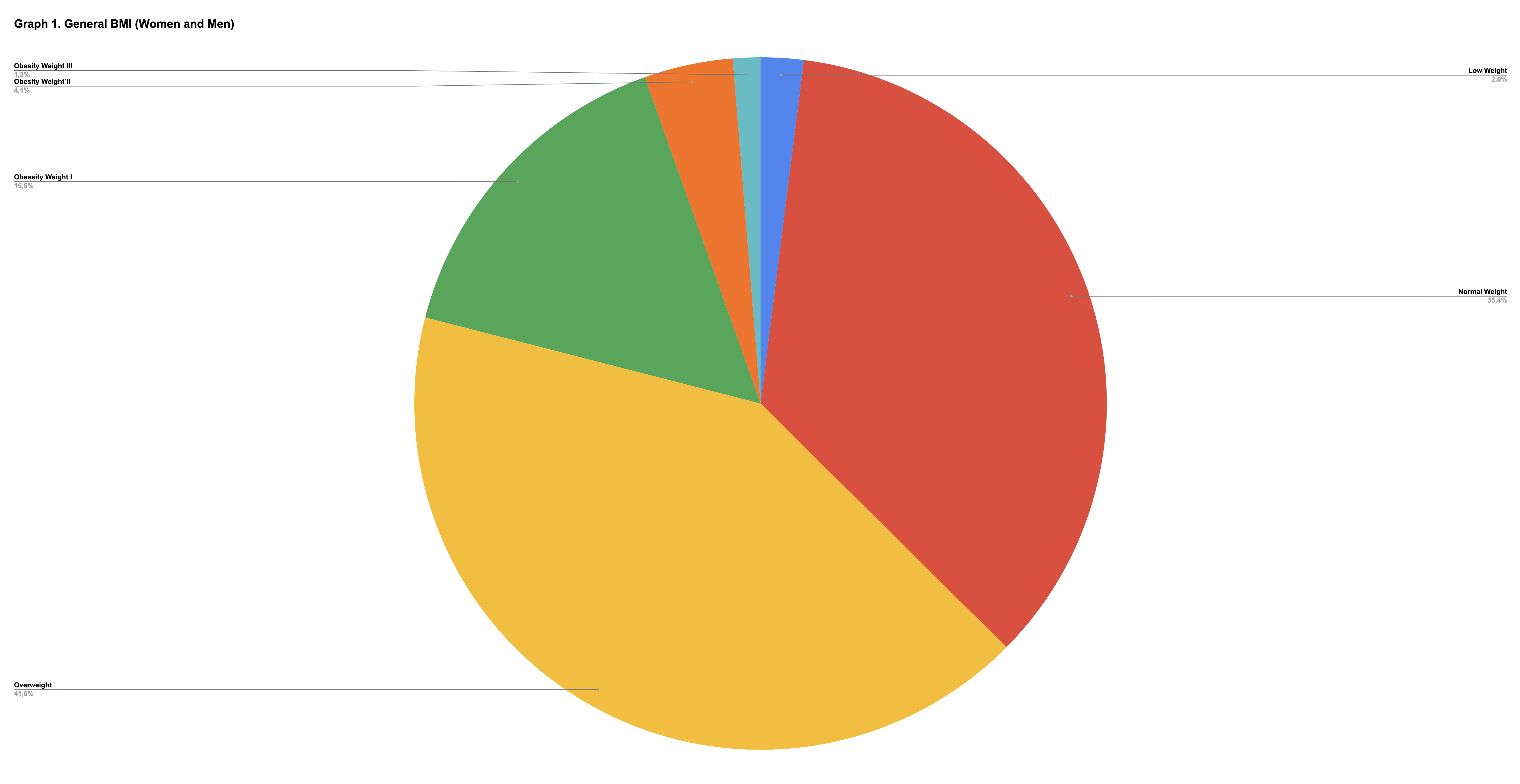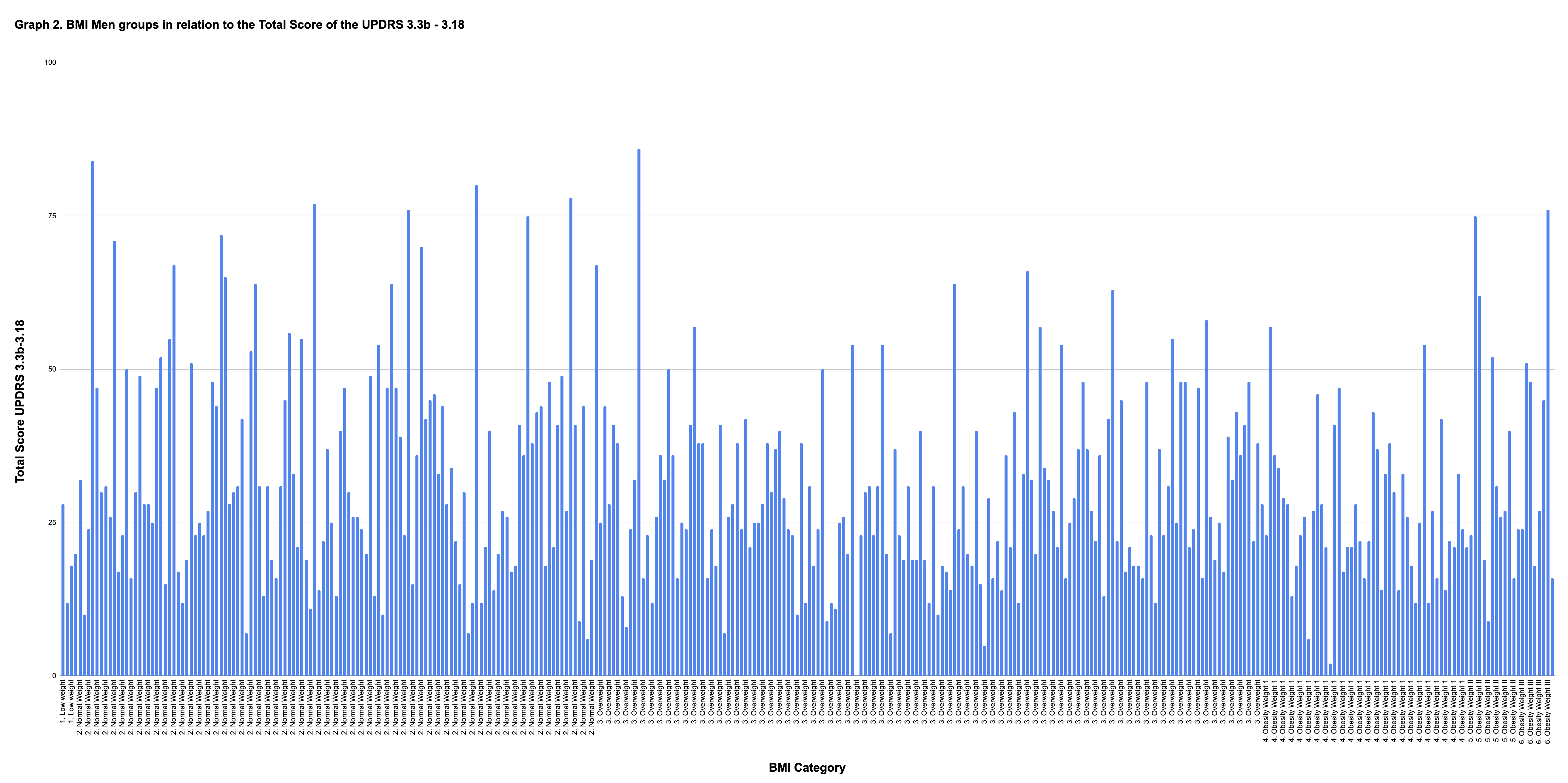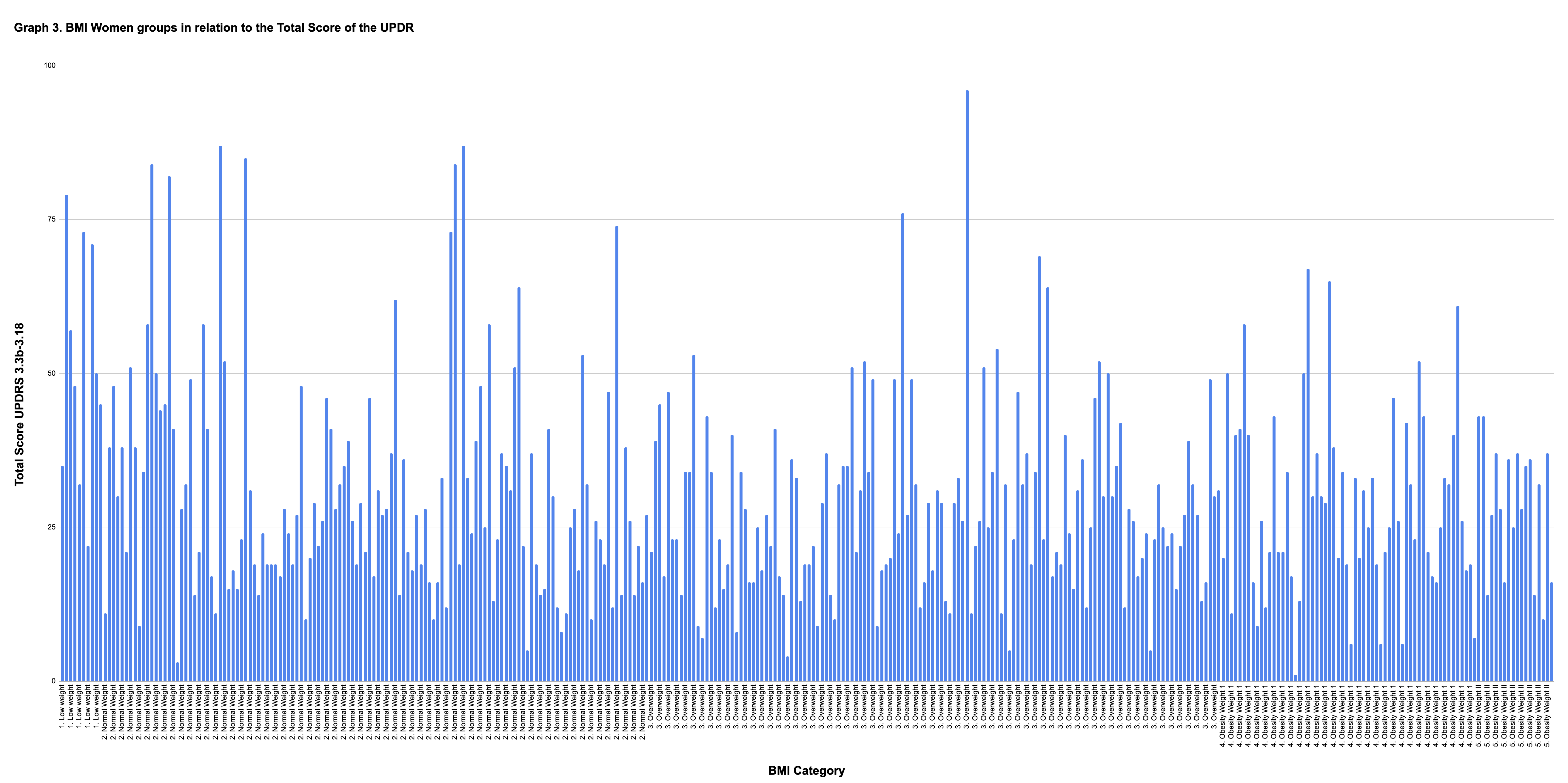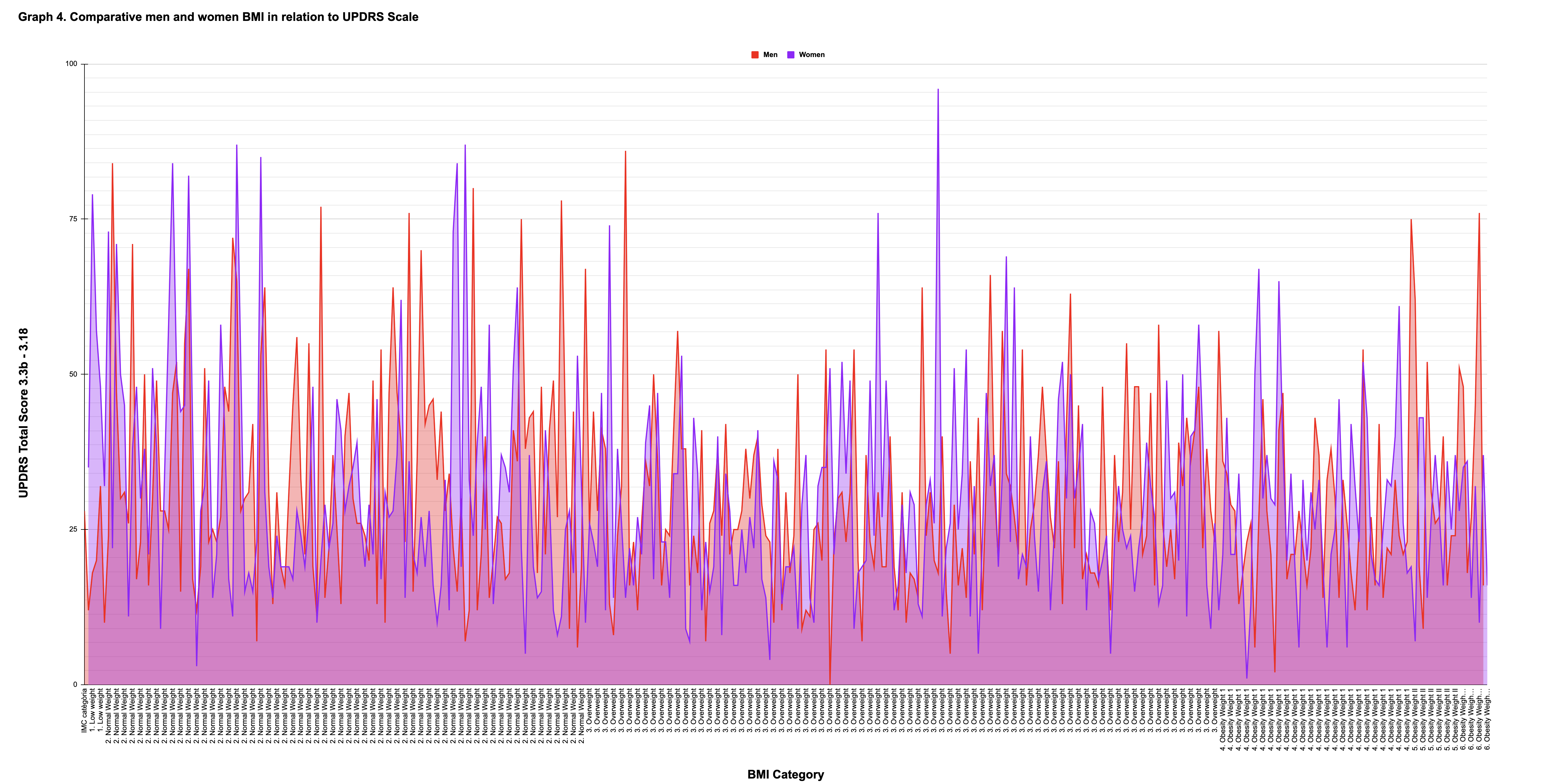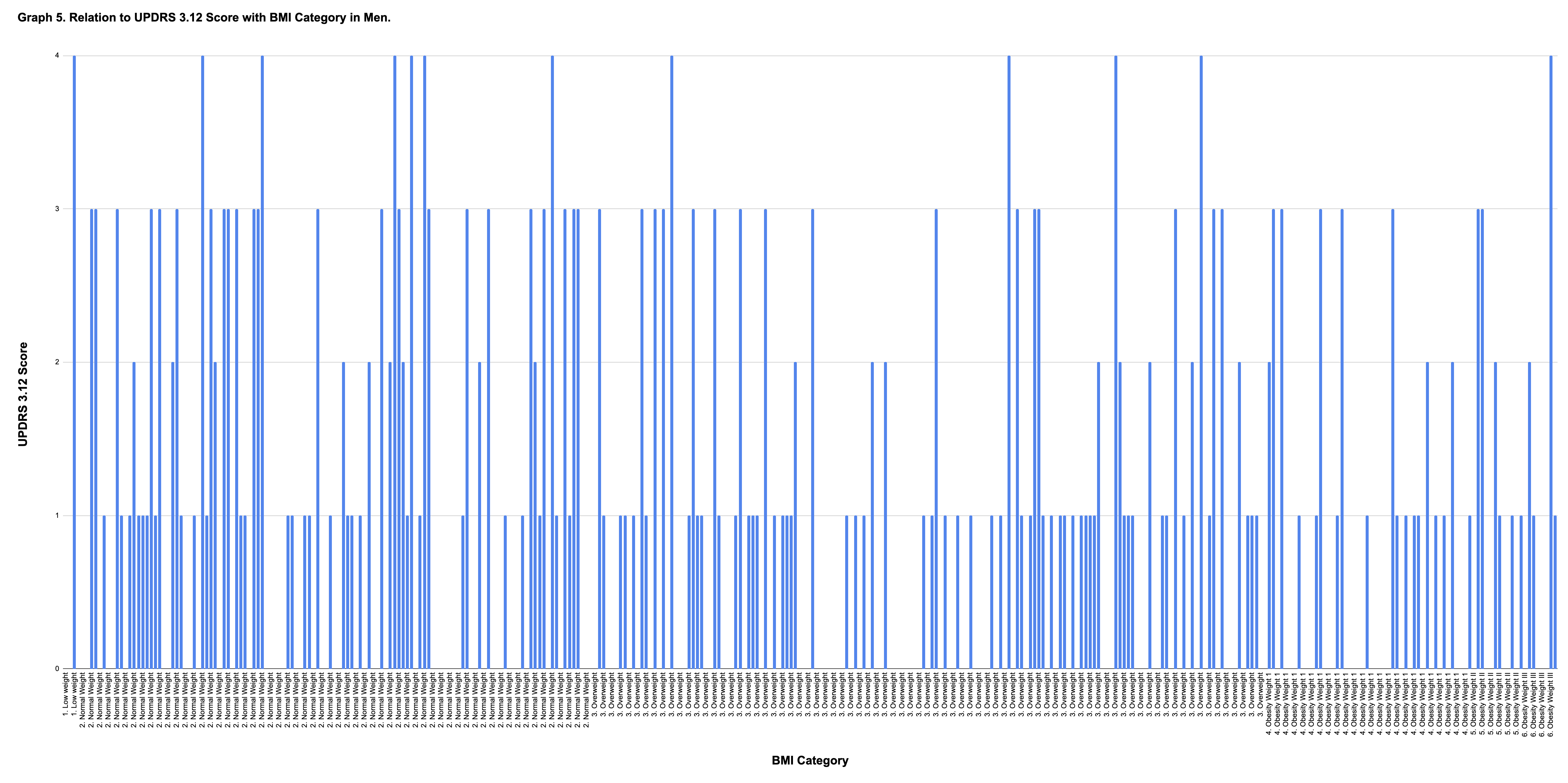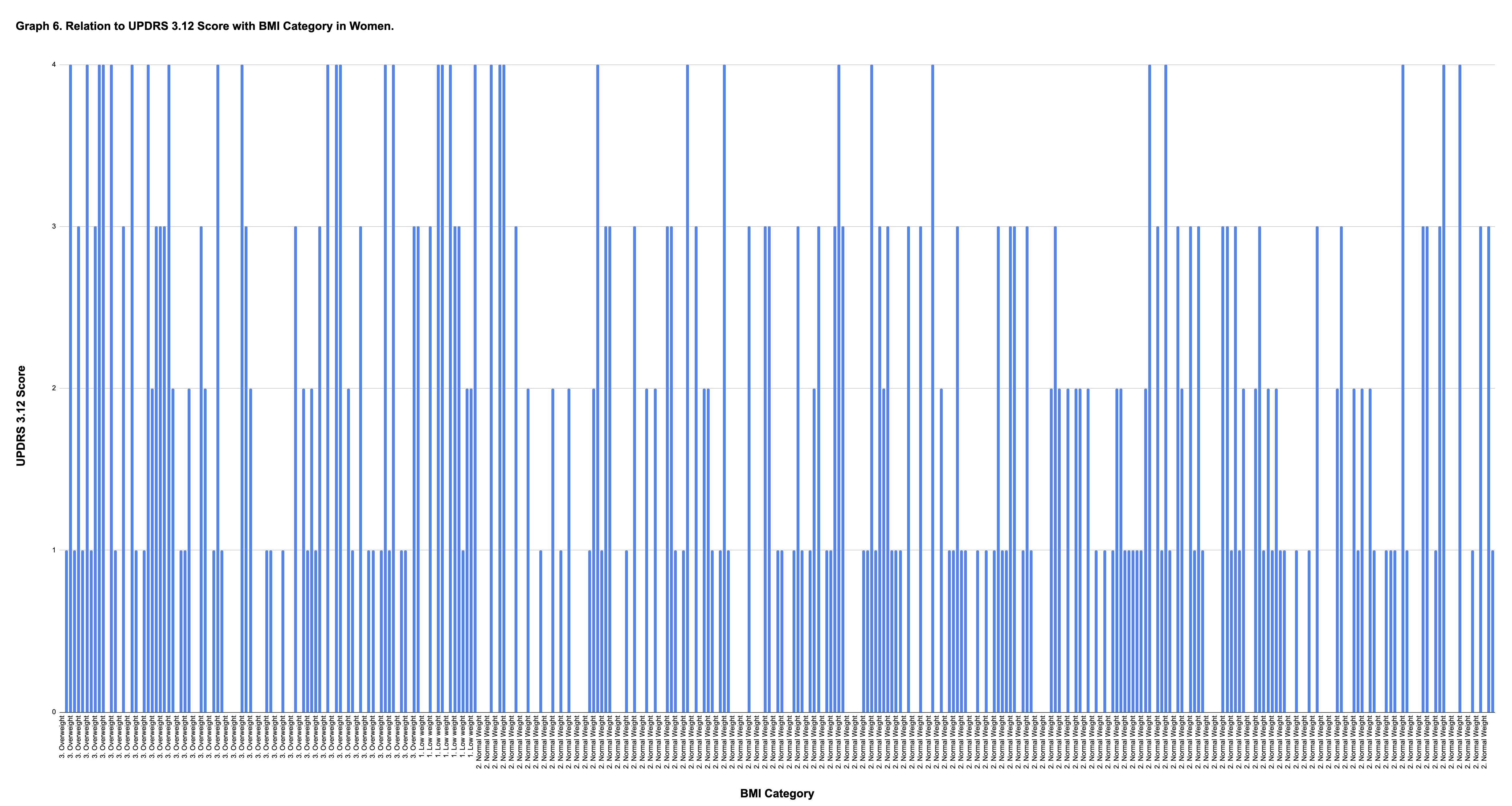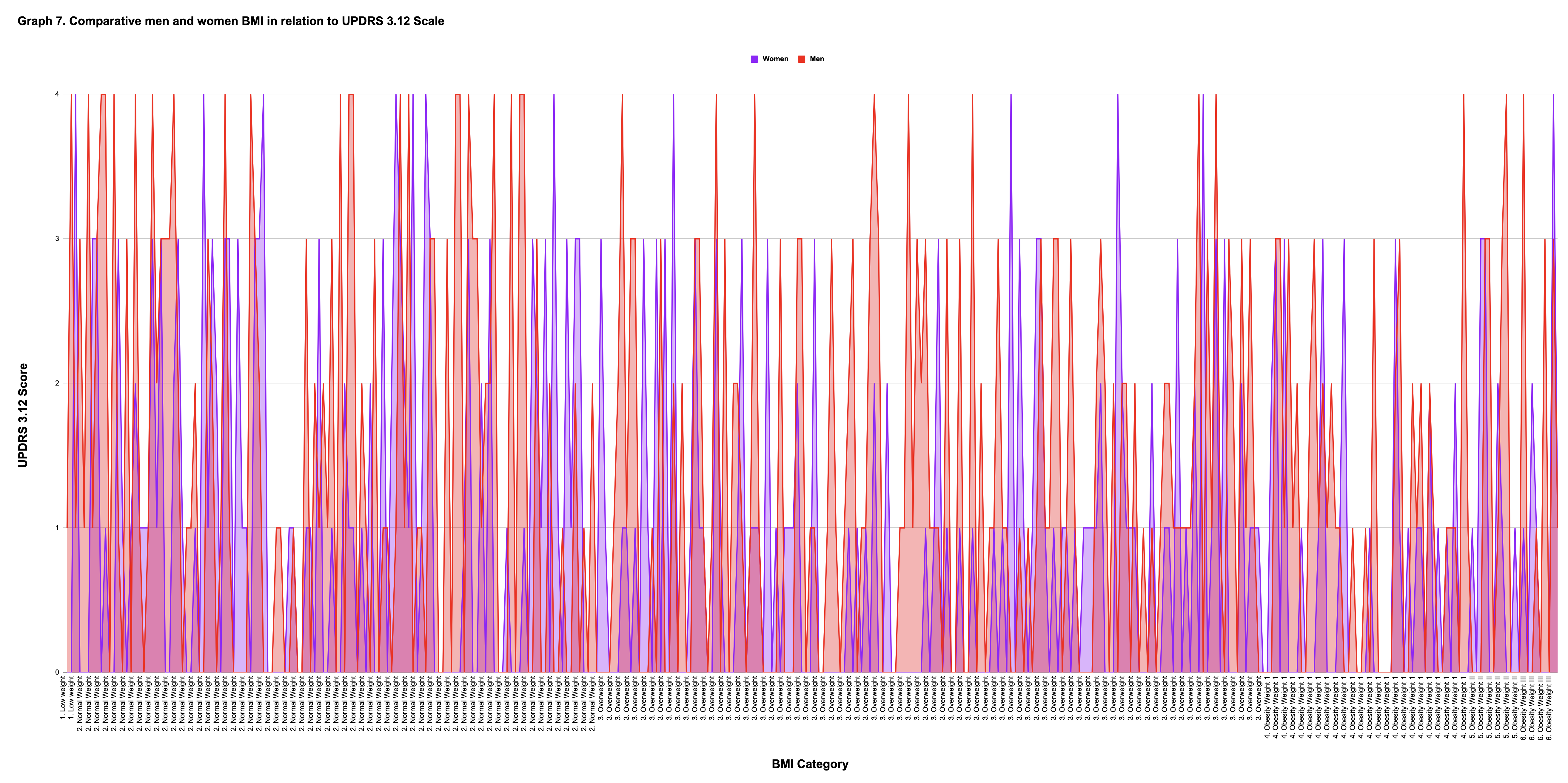Category: Parkinsonism, Others
Objective: To determine the degree of motor and postural impairment of patients with Parkinson’s Disease at the time of their first consultation according to the MDS-UPDRS 3 parameters, integrating the Body Mass Index as a possible poor prognostic factor in the motor and postural condition of these patients.
Background:
Obesity, being a public health problem worldwide, is not limited to Parkinson’s patients. The MDS-UPDRS 3 generally covers the set of musculoskeletal alterations within its various items and how they are progressively affected in the evolution of the disease. The Body Mass Index as a staging scale has deficiencies in its theoretical and empirical basis, underestimating those with lower body mass and overestimating those with higher body mass.
Method: An analytical retrospective cross-sectional study was conducted with the participation of 500 patients, using the REMEPARK 2 database. Cross-tabulations were employed to analyze the following variables: 1) Gender, 2) BMI Category, 3) MDS-UPDRS 3.3-3.18 Total Score, 4) MDS-UPDRS 3.12 Score, and the Kolmogorov-Smirnov test was used to assess central tendency variables.
Results: The most notable groups comprise 41.6% Overweight, 35.4% Normal Weight, and 15.6% Obesity Weight 1 (Graph 1). However, the group of men with normal weight exhibits significantly higher scores. Nevertheless, the overweight group encompasses a much larger number of individuals compared to the group with high scores (Graph 2). The Normal Weight and Overweight groups are the most predominant, yet the Low Weight and Obesity groups exhibit the most noteworthy scores (Graph 3). Furthermore, men tend to show higher total UPDRS scores than women across different categories, although the highest score is achieved by a woman in the Overweight category (Graph 4). The Normal Weight group, both in men and women, demonstrates the highest frequency of high MDS-UPDRS 3.12 scores (Graph 5-6). The Normal Weight category being the most significant among men and women, followed by the Overweight and Obesity Weight II categories (Graph 7).
Conclusion: The population with Parkinson’s disease is overweight; however, being the most prevalent category, it does not denote a significant difference regarding motor condition. Individuals with obesity grades II and III experience greater impairment in postural stability, regardless of gender.
General BMI (Women and Men)
Graph 2
Graph 3
Graph 4
Graph 5
Graph 6
Graph 7
To cite this abstract in AMA style:
C. álvarez-Hernández, R. Baños-Betancourt, K. Velazquez-Roman, G. Rivera-Monroy, A. Guerra-Anzaldo, W. Moguel-Cardín, A. Domínguez-García, D. Romero-Terán, A. Regalado-Mustafá, J. Delgado-Uriarte, N. Moreno-Aldama, A. Uribe Leon, M. Unda-Mcfarlane, A. Cervantes-Arriaga, M. Rodriguez-Violante, D. Luna-Escamilla, K. Gonzalez-Rosas, U. Ugalde-Miranda, F. Moralez-Gonzalez, M. Cabrera-Jimenez. Body Mass Index as a Possible Poor Prognostic Factor in Motor and Postural Condition Through the Evaluation of MDS-UPDRS 3.3 – 3.18 in Patients with Parkinson’s. [abstract]. Mov Disord. 2024; 39 (suppl 1). https://www.mdsabstracts.org/abstract/body-mass-index-as-a-possible-poor-prognostic-factor-in-motor-and-postural-condition-through-the-evaluation-of-mds-updrs-3-3-3-18-in-patients-with-parkinsons/. Accessed January 2, 2026.« Back to 2024 International Congress
MDS Abstracts - https://www.mdsabstracts.org/abstract/body-mass-index-as-a-possible-poor-prognostic-factor-in-motor-and-postural-condition-through-the-evaluation-of-mds-updrs-3-3-3-18-in-patients-with-parkinsons/

